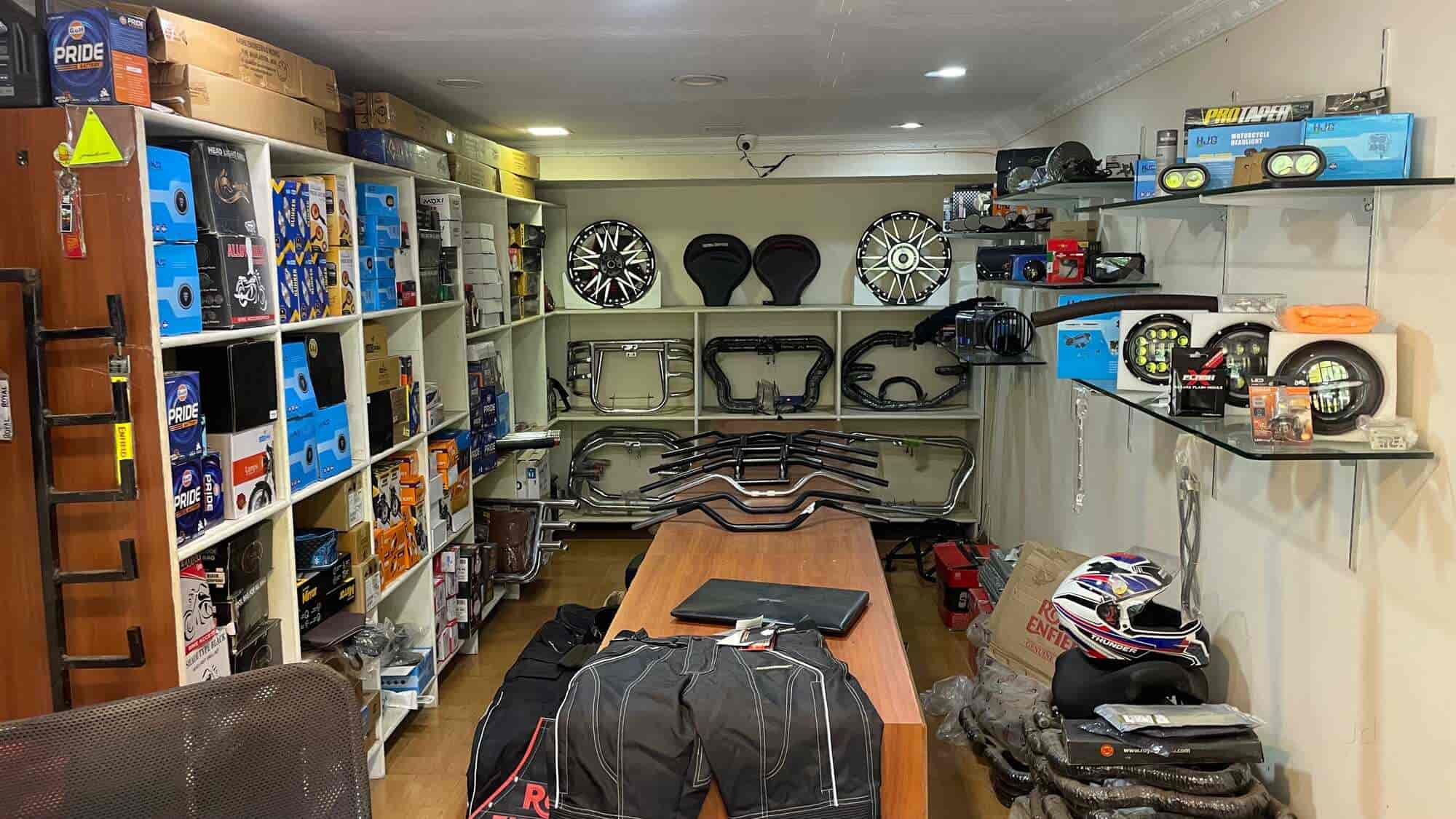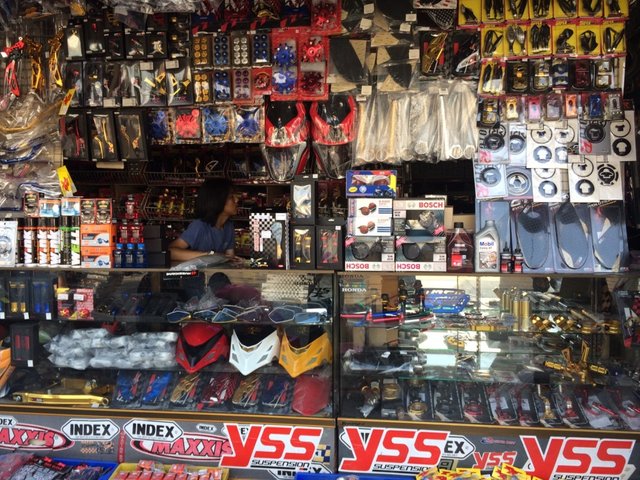Locate Competitive Costs on Motocross Parts NZ for Every Bike
Recognizing the Vital Parts of a Motorcycle: A Comprehensive Guide for Lovers
For motorbike lovers looking to elevate their riding experience and ensure their bikes run efficiently, recognizing the important elements of a motorbike is vital. Each component, from the engine's intricate workings to the crucial function of the braking devices, not just impacts efficiency yet additionally safety and security and convenience.
Engine Components

The camshaft plays a critical role in managing the timing of the engine's valves, ensuring the precise opening and closing needed for effective gas and air intake, as well as exhaust expulsion. This timing is essential to keeping ideal engine efficiency and efficiency. Furthermore, the carburetor or gas shot system, relying on the motorcycle version, is accountable for blending air with gas in the appropriate proportion for combustion.
The air conditioning system, either air or liquid-based, functions to keep the engine's temperature level within operational restrictions, avoiding overheating and making sure long life - motorbike shop. Each part, carefully developed and integrated, contributes to the smooth procedure of the engine, specifying the motorbike's power output and overall performance
Transmission System
Important to the motorcycle's functionality, the transmission system guarantees reliable power transfer from the engine to the wheels. This system comprises a number of essential components, including the clutch, gearbox, and final drive, each playing an important function in equating the engine's power into motion. The clutch, commonly operated by a hand lever, offers to disengage the engine and involve from the transmission, permitting for smooth equipment modifications and regulated velocity.
The transmission, commonly described as the transmission correct, contains a collection of equipments that motorcyclists can manually shift through to change the bike's speed and torque outcome. These equipments are set up in a sequence that allows the bike to increase efficiently and keep ideal engine performance across different rates. A lot of bikes utilize a sequential gearbox, needing the motorcyclist to move gears in a predetermined order.
Braking Devices
While recognizing the transmission system is essential to taking advantage of a motorbike's power, equally important is the capability to manage and stop that power successfully, which is where stopping mechanisms come into play. Brakes are essential for safety and security and performance, giving the rider with the needed control to browse various terrains and conditions. Typically, motorbikes feature two sorts of stopping systems: disc brakes and drum brakes.
Disc brakes are check my blog extra common in modern-day bikes due to their premium efficiency. This system provides far better heat dissipation, consistent efficiency, and enhanced stopping power, particularly in wet problems.
Alternatively, drum brakes, though less typical, are still discovered in some motorcycles. They function by pushing brake shoes versus the inner surface area of a drum connected to the wheel. While usually less efficient in warmth dissipation and quiting power, drum brakes are less complex and much more affordable.
Recognizing these stopping systems' nuances allows cyclists to maintain their motorbikes appropriately and value the design that makes certain risk-free and reliable quiting.
Suspension and Guiding
Suspension and guiding systems are essential elements that significantly influence a motorcycle's handling and trip convenience. The shock absorber, being composed of forks at the front and shock absorbers at the back, takes in roadway irregularities, enhancing security and control. Front forks, usually telescopic or upside down, compress and rebound to minimize influences, while back shock absorbers keep tire call with the roadway, essential for traction and safety.
Steering, focused around the handlebars, links the cyclist to the motorbike's directional control. The steering head bearings guarantee smooth operation, enabling precise maneuverability. Appropriate placement and upkeep of these bearings are important for predictable steering feedback and minimizing cyclist exhaustion.
The suspension's adjustability is one more vital element; preload, damping, and rebound settings allow modification to match different riding styles and problems. This adaptability is vital for maximizing efficiency, whether browsing city roads or tackling rugged tracks. Developments like digital shock absorber provide real-time changes, boosting trip top quality throughout varied terrains.

Electrical Equipments
After guaranteeing a controlled and smooth adventure via reliable suspension and guiding systems, focus transforms to the electrical systems, a pivotal element of modern bikes. These systems play a crucial function not just in starting the engine but additionally in powering various elements that improve the functionality and safety of the motorbike.
At the heart of a bike's electrical system is the battery, which stores electric power necessary for beginning the engine and powering supporting systems - motox parts nz. The generator or generator, paired with the rectifier-regulator, ensures the battery remains billed while the motorbike functions, transforming mechanical energy right into electric energy and maintaining voltage levels
The ignition system, an additional essential part, is in charge of sparking the air-fuel combination in the engine's cyndrical tubes. Modern motorcycles often utilize a digital ignition system, supplying better more info here efficiency and reliability compared to traditional systems.
Lights systems, consisting of headlights, tail lights, and signs, motocross helmet with goggles are additionally essential, ensuring exposure and safety and security for the cyclist. Added digital components such as sensing units, control systems, and presents add to innovative functions like gas injection management, anti-lock braking systems (ABS), and electronic dashboards, better enhancing the riding experience.
Final Thought
A detailed comprehension of a bike's crucial components, consisting of the engine, transmission system, stopping mechanisms, suspension, guiding, and electrical systems, is indispensable for enthusiasts aiming to maximize comfort, safety, and efficiency. Mastery of these components enables for notified decisions concerning maintenance and upgrades, ultimately improving the riding experience. By incorporating this knowledge, riders can ensure their bikes run at peak performance and integrity, thus making the most of both enjoyment and long life of their cars.
For bike enthusiasts looking to raise their riding experience and guarantee their bikes run smoothly, understanding the necessary elements of a motorbike is extremely important.Important to the motorbike's capability, the transmission system ensures efficient power transfer from the engine to the wheels.While recognizing the transmission system is vital to utilizing a motorbike's power, similarly essential is the capacity to control and stop that power successfully, which is where stopping systems come into play. Typically, motorcycles include 2 kinds of braking systems: disc brakes and drum brakes.
A complete comprehension of a bike's essential parts, consisting of the engine, transmission system, stopping systems, suspension, guiding, and electric systems, is crucial for enthusiasts intending to enhance security, performance, and convenience.